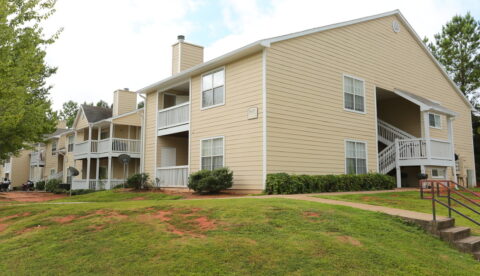Can the Future of Multifamily Investing Really be Predicted?

It’s been a point of faith for at least a decade now that this particular generation of Americans won’t be as prosperous as its parents were. (Even though a decade is about half a generation.)
Many now take it as common knowledge that even the most basic manifestation of the American Dream – a house – is beyond the reach of most millennials and more than a few of the youngest Generation Xers. That’s not really true, but let’s assume it is.
Logically, such a dearth of homeownership ought to benefit owners of rental properties. Even the poorest members of the latest generation of adults are still going to need places to live. But the general wisdom seems to be that as the economy continues to sputter along, or at least not grow as quickly as it once did, more people will rent than own their living quarters. This should be welcome news for those people who are smart and/or farsighted enough to invest in multifamily dwellings.
Not All Change is Profound
The truth is that temporary economic conditions don’t have as big an impact on the future of the multifamily market as one might think. Regardless of what’s happening in the economy at large, even were the nation to enjoy untold levels of prosperity, there will always be a significant contingent of the population for whom apartment or condo living makes the most fiscal sense, at least temporarily. There are millions of people for whom home ownership isn’t even a goal. And many of those people could technically afford to move out of multifamily properties and into something detached.
Perhaps the best course of action for an investor to take is the conservative one. The one which assumes that no sudden major changes will happen to affect the composition of the multifamily property market.
(Sudden major changes do happen historically, but are so infrequent as to be impossible to generalize about. In general terms they’re something along the lines of the breakout of American involvement in World War II. Within days, the first of millions of men of marriageable age moved away from home, either across the country or across an ocean, into temporary housing of unknowable duration. The multifamily real estate market back home thus remained stagnant for years, wracked by uncertainty and human crisis. It took the Japanese surrender to begin restoring some order and predictability into the lives of the American people, and thus into the multifamily market itself.)
So, Why Can’t We Predict the Future?
It’s hard to gauge a pure market in housing, because so much of said market is subject to forces beyond consumers and producers coming to an equilibrium on both price and quantity, and supply and demand. Government programs on every level – national, state, and municipal – overwhelm the process and distort the numbers. Said programs range from subsidizing certain classes of renters, to prohibiting certain classes of building from being developed in certain geographical areas, to manipulating interest rates (and thus mortgage rates, thereby turning some potential renters into potential owners and vice versa).
Keep in mind that the population continues to grow. Most estimates have the world population stabilizing somewhere around the middle of the century. On a national level, the United States remains a desirable place to immigrate to and reproduce in, given its high standard of living and its low population density. (Your own city might seem tightly packed at times, but the U.S. is still the 51st most sparsely populated country on Earth.) Which means that there’s still lots of demand for the multifamily housing supply to keep up with.
In fact, in 2015 (which is the latest year for which we have reliable data), 306,000 multifamily units were finished and made available to renters. In other words, the market is nowhere close to leveling off. In fact, that number represents the largest single-year increase to the multifamily stock in 26 years. Property prices are also rising, which ought to be a welcome sign for any investor. Granted, it’s hard for them not to, given the recessionary doldrums of the late-aughts.
Unit growth is even outpacing the steady population growth. Which means that more and more people are looking to move into apartments and condos, for myriad reasons. Older adults with disposable income who are downsizing and simplifying. Families on the other side of the financial spectrum who aren’t looking to own. Young singles moving out of their parents’ basements. And of course, newcomers – whether from another nation, another state, another town or another neighborhood – looking to start anew for whatever reason. The cyclical and dynamic nature of the housing market means that there always is and always will be a flow of people looking to move into multifamily units. Which is a clear signal to the diligent investor looking to stay ahead of trends.
Because it’s Hard Enough to Know the Present

Great Recession or Modest Recovery, the only thing truly “out of reach” for players in the residential real estate market is exact knowledge of how rents and availability in said market will behave.
You can dizzy yourself by weighing variables about the market at large or even the market regionally; accounting for this change in the labor force participation rate, with that dip in the consumer price index, and acknowledging the other quarter-point rise in the prime lending rate.
Rather than attempt to anticipate sudden and unknowable major shifts in the characteristics of the market (which, as we’ve demonstrated, are all but impossible to predict), it’s best to assume that any and all changes will be incremental. And as always, it’s also a viable option to defer to the experts in the field.
For most multifamily investors looking to build wealth, finding a proven real estate investment firm with a 16-year proven track record and letting said firm handle the work of identifying and capitalizing upon worthwhile properties can prove to be a smart move for one to make.




























